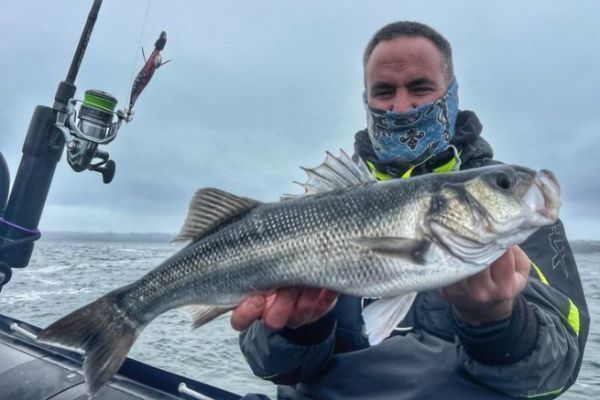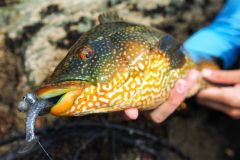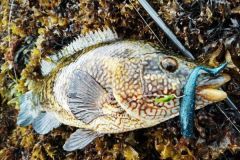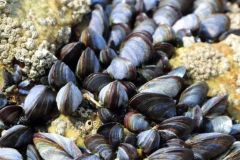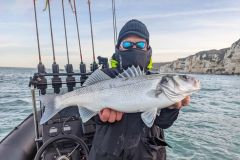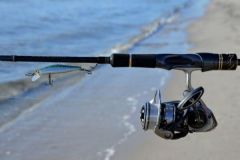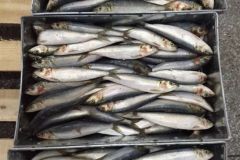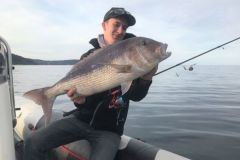Selecting a versatile rod
To get started, don't buy too many rod and reel sets. Define a set of specifications that will enable you to find the rod that will cover as many situations as possible.
On board, the lures used will generally be lighter than when boating. It's rare to exceed 30 grams overall, except when casting far away with jigs, for example. On the other hand, the areas where you will fish very "light" will be few and far between, or very specific.
In boats, lures can be heavy, especially when fished vertically. Keep in mind that a high-powered rod can accept lures up to twice the advertised maximum weight when fishing vertically without casting.
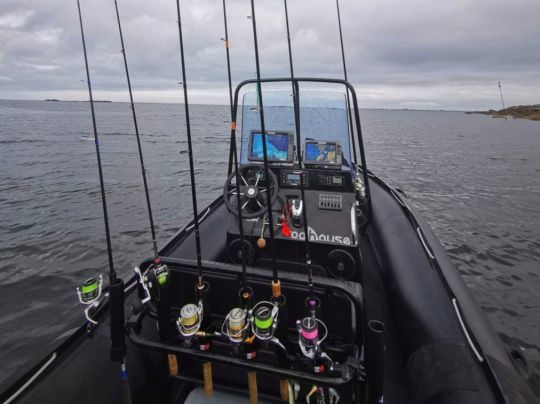
Taking into account the constraints of both shore and boat fishing, opt for a rod of around 2.20 to 2.30 m with 10/40 power.
Such a length will enable you to achieve decent casting distances and be comfortable with animations.
Invest between ?150 and ?200 maximum and you'll have a quality rod that combines all these qualities.
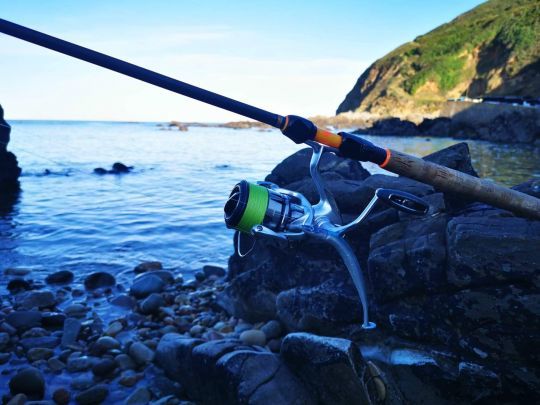
Choosing the right reel
The reel completes the package. For lure fishing, it's essential to use a reel with a fairly high ratio, enabling rapid retrieval. (90 cm per turn of the crank is a value suited to sea lure fishing).
The two sizes that stand out are the 3000 and the 4000. Capacity isn't a real problem, as there's little chance of you emptying the spool here. The choice will mainly be made on the mechanics, which must be fluid, the quality of the brake and the weight of the reel.
So, choosing between 3000 or 4000 is difficult. Position it on your rod and see which one you're most comfortable with.
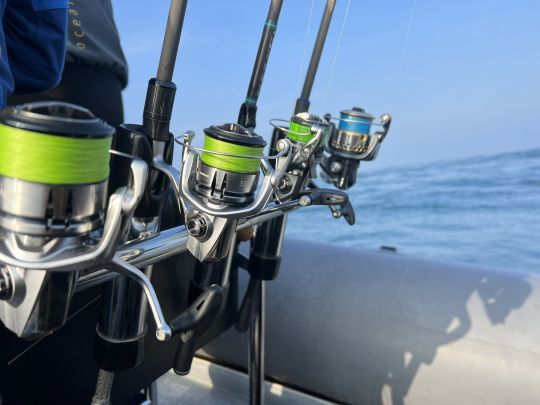
As with rods, there's something for everyone. For years, I've been putting my trust in the Shimano brand with its Stradic range. You'll find similar models of equally good quality from other suppliers, but I don't have the experience to tell you about them objectively.
Finding the right braid/fluorocarbon combination
Last but not least, the consumables, as we call them.
For braid, the choice can be trickier depending on whether you're fishing from shore or from a boat. On shore, the main problem is abrasion of the line when it comes into contact with rocks. On a boat, there are fewer risks, which means you can opt for a finer model.
The choice is between PE 1 and PE 1.2. Personally, I'm leaning towards the PE 1.2 to create a versatile set. On the other hand, I select a quality braid, well rounded, that glides perfectly through the rings to gain casting distance.
Personally, I've been using the Prodigy model from Rodbuilders' Republic, distributed by Rodhouse, for several seasons now.
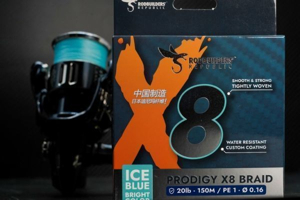
One model I can recommend that offers excellent value for money is the Daiwa J-Braid Grand. I've used it for many years and it has always met my expectations.
I'm going to play with the leader depending on whether I'm fishing from shore or from a boat. Here, I'll select 2 to 3 spools to vary diameters and gain in discretion depending on fishing conditions.
I have a soft spot for Seaguar's Neox model. This fluorocarbon is universally recognized as being extremely resistant, allowing you to reduce the diameter while maintaining high strength.
By combining a 28.5-centimetre and a 33-centimetre coil, you'll be able to cope with most situations. Expect to pay an average of 50 euros for a spool of braid and fluorocarbon.

The difficult choice of lures
As you may have noticed, your retailer's shelves are bursting at the seams at the start of the season. There are hard, soft and metallic lures, each as beautiful as the next. How do you find your way through this vast choice without losing all your savings?
Define your needs and go for the essentials. A few soft lures, one or two surface lures, and the same for swimfish and jigs.
I'm sharing with you my personal selection of lures that I use from both shore and boat. When bass are active on the surface, I like the Asturie in size 130, which is all-purpose. The Super Spook or the Feed Popper are still great values. Expect to pay between ?15 and ?30 for these models.
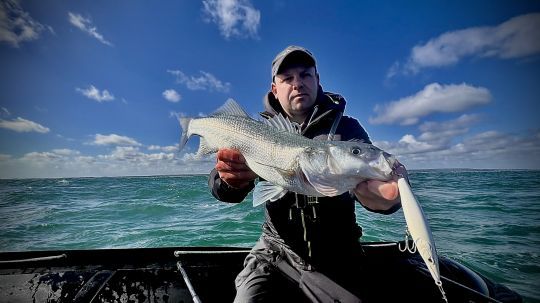
I supplement this with swimming fish. The choice is vast and I've had good results with the Megabass Vision and the Tide Minnow.
I always have a few jigs with me, either to try and reach far-off areas, as this lure has the ability to be cast a long way, or to fish at depth or in places with strong currents. They have the advantage of fishing a multitude of species. Some jigs from 20 to 50 grams, such as Haret de Ragot or Drag Métal for casting jigs, are good values.
Finally, the most complicated choice is soft lures. I trust the Fiiish range and target three lure models:
- The Black Minnow in size 120 or 140, mounted on heads from 18 to 40 grams. Simply put, this lure is effective in all conditions.
- The Crazy Sand Eel in sizes 120 and 150, mounted on lead heads between 15 and 30 grams. I like this lure when faced with active fish or in areas with a concentration of sand eels.
- The Crazy Paddle Tail, in sizes 120 and 150, like the Crazy Sand Eel.
When it comes to colors, you'll be spoilt for choice. Keep in mind that natural remains a value in almost all conditions. Blue, khaki, brown or green are sure-fire favourites!
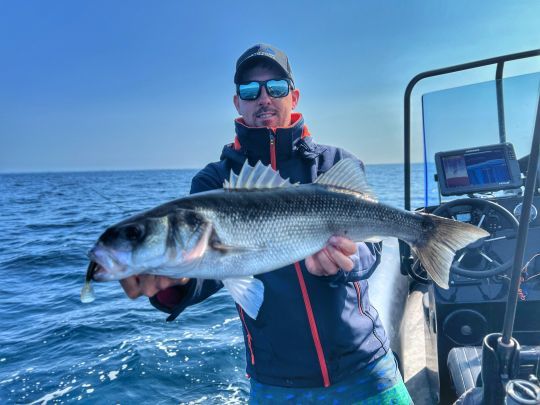
To put together a complete box, you'll probably need to spend around a hundred euros. With hard lures, the price can quickly climb.
All in all, equipping yourself for both boat and shore fishing will require an initial investment of around ?500. Not an insignificant sum. The equipment proposed here will ensure that you can fish a maximum number of spots, both from a boat and from shore, thanks to its versatility. As you go along, you'll be able to adjust it to your needs and the specificity of your area.
